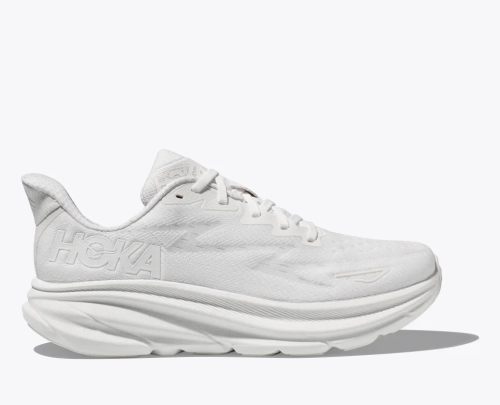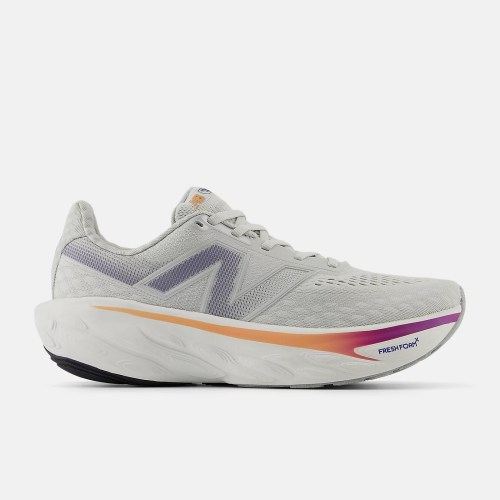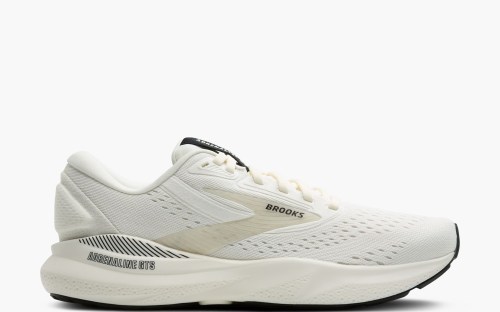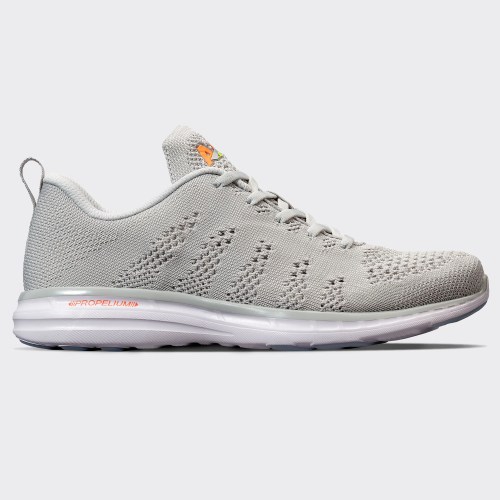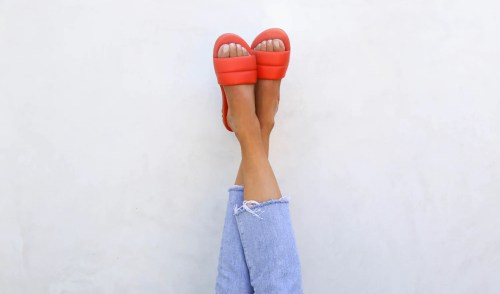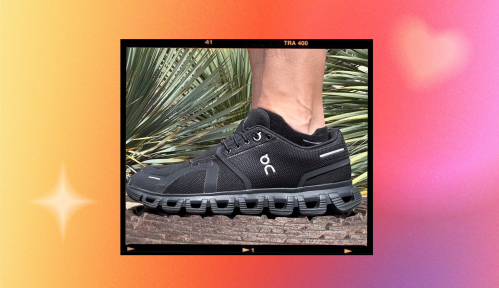Our editors independently select these products. Making a purchase through our links may earn Well+Good a commission
Given the assortment of colors, styles, and technologies available, it can be tempting for runners to pick their footwear based on cool factor alone. But snapping up the sexiest pair of sneakers is decidedly not the right way to find the best running shoes, according to podiatrists. For the sake of your body’s overall well-being, you’ll want to make a choice based on your foot type.
Experts in This Article
board-certified podiatric surgeon and founder of Gotham Footcare
board-certified podiatrist, foot surgeon, and founder of Fix Your Feet
“When it comes to foot health it is very important to have appropriate running shoes, because certain foot types are more prone to specific types of foot discomfort and foot related injuries,” says Miguel Cunha, a board-certified podiatrist with Gotham Footcare. “Wearing the wrong shoes may lead to problems such as lowered performance and discomfort, but on the other hand (or foot), shoes designed to compensate for the impact of your feet can help prevent injuries and improve structural alignment and performance.”
Your feet are the “gateway” to the rest of your body, says Dr. Cunha. Wearing the wrong shoes can cause issues that move from your toes all the way up through your hips and back—and leave you with persistent pain down the line. To help you navigate the sneaker aisle, we asked Dr. Cunha and Yolanda Ragland, DPM, founder and CEO of Fix Your Feet, Inc, how to pick out the best running shoes by foot type.
Best running shoes for different foot types, at a glance
- Best for high arches: Brooks Ariel GTS 24, $160
- Best cushioned for high arches: Hoka Clifton 9, $145
- Best responsive for high arches: New Balance Fresh Foam X 1080v14, $165
- Best for flat feet: Brooks Adrenaline GTS 24, $140
- Best cushioned for flat feet: Asics Gel-Kayano 31, $165
- Best responsive for flat feet: Mizuno Wave Rider 28, $140
- Best for neutral feet: Nike Pegasus 41, $140
- Best cushioned for neutral feet: APL TechLoom Pro, $160
- Best responsive for neutral feet: On Cloudflow 4, $160
The best running shoes for high arches (“hyper-supination”)
If you’re dealing with high arches (or hyper-supination), it’s important to find sneakers that have extra cushioning to aid in shock absorption since this type of foot doesn’t provide enough shock absorption on its own. “Look for shoes with soft, flexible midsoles, and look as if they don’t have an arch at all but are rather filled in with more sole and cushioning,” says Dr. Cunha. With running shoes, opt for something that has extra rubber in the sole (which Dr. Cunha explains translates into a “smoother and bouncier gait”), and for cross training, pick a shoe that has flexible grooves in the sole to “facilitate ballistic pivoting and cutting,” says Dr. Cunha. In either situation, you’ll also want to be sure that your shoe has a spacious toe box that allows your toes to move freely, which will minimize the discomfort in your arch, and a wide heel, which will add stability.
To find out if a particular sneaker works for high arches, you can put it through two tests. First, try to bend it in half to check out how rigid it is. “You shouldn’t be able to, because the shank is the actual structure of the shoe and should be rigid to hold up and support the arch,” says Dr. Cunha. Then, squeeze the heel of the shoe to see how firm it is. “You shouldn’t be able to compress it, because there should be a good bit of padding called an ‘ankle collar,’ which is intended to protect and cushion the ankle and the achilles tendon,” says Dr. Cunha. This, he adds, will help protect you from injury.
Sizes: 6-13 (half, wide, and extra-wide sizes available) | Colors: 3 | Drop: 12mm
Brooks Ariel is one of the beloved running brand's most supportive styles. On top of being a firmer shoe (see Dr. Cunha's advice above), the built-in GuideRails GTS (Go-To Support) system adds support to keep your feet in alignment while you stride. But just because they're supportive doesn't mean they're uncomfortable—the Ariel uses nitrogen-infused foam cushioning for soft landings.
Pros:
- Super supportive shoe
- Generous cushioning
- Wide and extra-wide sizes available
Cons:
- Limited color options
Sizes: 5-12 (half sizes available) | Colors: 11 | Drop: 5mm
Perfect for everyday running, the Clifton 9 is a plush, yet lightweight shoe. It's technically not a stability shoe, but the slight rocker-style silhouette helps keep feet moving in a more structured manner than your average sneaker. Plus, this shoe has the American Podiatric Medical Association (APMA) Seal of Acceptance, which means it's been reviewed and approved by podiatrists to promote foot health.
Pros:
- Lots of color options
- Generous cushioning
- Rocker style sole adds alignment support
Cons:
- No wide options
- Might be too high of a stack for some
Sizes: 5-13 (half, narrow, wide, and extra-wide sizes available) | Colors: 15 | Drop: 6mm
One important, yet often overlooked part of finding the right shoe for your foot type is ensuring you have the right fit. Luckily, this springy and responsive shoe from New Balance is available in narrow, wide, and extra-wide styles to accommodate all types of feet. Beyond fitting well, the Fresh Foam X 1080v14 features soft cushioning that doesn't compromise responsiveness, and a slight rocker style to help propel you forward.
Pros:
- Inclusive sizing
- Lots of color options
- Responsive cushioning
Cons:
- Chunkier foam might not be for everyone
- Slightly pricier shoe
The best running shoes for flat feet (“over-pronation”)
When you’ve got flat feet, you’re going to want to opt for a pair of motion-control or high stability sneakers, which well help keep your feet better aligned with your legs. “Look for shoes that have a dense, supportive arch, which helps provide reinforcement and keeps the arches of the foot from collapsing,” says Dr. Cunha. This type of shoes tend to be stiff, and only allows for flexibility near the toe area. “Shoes that are made for pronators have a medial post support, a wedge that is built into the shoe under the arch to prevent the arch from collapsing and/or rotating inward,” says Dr. Cunha. By minimizing pronation, this construction helps distribute the impact of running more effectively.
If you’re shopping for running shoes, he suggests opting for a pair that has stabilizing roll bars, which help protect the arches. if cross training is more your speed, look for something with a wide toe box, which will allow for “comfortable lateral movement, as pronating feet will collapse and spread within the shoe,” he says.
Sizes: 5-13 (half, narrow, wide, and extra-wide sizes available) | Colors: 19 | Drop: 12mm
The Adrenaline GTS 24 is another pick from Brooks, because when it comes to support, the brand really knows what they're doing. Like the stiffer Ariel style above, the Adrenaline also uses the brand's "GuideRails" system to keep your foot in proper alignment while you stride. It's a slightly softer, more cushioned shoe, though, which is great for relieving pressure during long runs.
Pros:
- Extensive color range
- Some wide, narrow, and extra-wide sizes
- Built in GTS support helps with overpronation
Cons:
- Runs slightly short
Sizes: 5-13 (half, narrow, and wide sizes available) | Colors: 19 | Drop: 10mm
This stability shoe from Asics is one of the brand's most popular styles. On top of using Asics' "4D Guidance System" for stability, the Gel-Kayano offers plenty of cushioning thanks to a combination of gel foam and bio-based foams (sustainability perk!). Plus, the upper has plenty of ventilation to keep your feet cool through long runs.
Pros:
- Balance of cushion and stability
- Upper mesh for breathability
- Tons of colors
Cons:
- Limited colors for narrow sizes
Sizes: 6-12 (half sizes available) | Colors: 11 | Drop: 12mm
This springy style from Mizuno uses an inner plate to provide stability and disperse energy from impact evenly throughout the shoe. While still offering plenty of cushion, the Wave Rider 28 is a great pick for anyone looking for a lighter, more responsive running sneaker. The higher heel cup also helps provide ankle stability and, as a result, better support through your strides.
Pros:
- Inner plate helps with energy return
- Good balance of cushion and stability
- Higher heel cup
Cons:
- No narrow or wide sizes
The best running shoes for neutral feet
If you’ve got a neutral foot, it means you distribute your weight evenly as you move, so having motion control in your shoes isn’t quite as important as it is with other foot types. What is important though, is stability. “With this foot type you need stability or moderate-stability sneakers, which offer a balance of cushioning and support,” says Dr. Cunha.
Neutral running shoes tend to have a flatter sole that’s more uniform from heel-to-toe (and don’t have a medial wedge) to provide even support throughout your foot. “A lightweight shoe that bends just to the ball of the foot will be sufficient enough to offer a good balance of cushioning and support,” says Dr. Cunha. “When picking shoes for running, look for a shoe that provides traction and reduces instep strain. When picking shoes for cross-training pick shoes that have soles that look like a slinky which help put an extra spring in your step.”
Sizes: 5-12 (half and extra-wide sizes available) | Colors: 13, plus a design-your-own option | Drop: 10mm
Neutral runners will appreciate the responsiveness and soft cushion of the Nike Pegasus. This shoe features a breathable, knit upper and a higher heel cup for support. Plus, this silhouette has a wider forefoot and heel for added stability (and, in turn, a springier stride).
Pros:
- Wide forefoot and heel for stability
- Generous cushion
- Option to customize your colors
Cons:
- Only available in standard and extra-wide sizes
Sizes: 5-11 (half sizes available) | Colors: 39 | Drop: 8mm
While the lower stack on this shoe doesn't look particularly plush, APL is a brand known for their technical foam. The TechLoom Pro uses the brand's responsive "Propelium" midsole foam for comfortable cushioning and springiness. It also features a one-piece knit upper that's seamless in style and breathability.
Pros:
- Comfortable knit upper
- Technical foam adds cushion
- Lower profile
Cons:
- Smaller size range compared to other shoes on this list
- Lower stack might not be for everyone
Sizes: 5-11 (half sizes available) | Colors: 5 | Drop: 8mm
Lightweight and responsive, this running shoe from On is a great pick for anyone with a need for speed. It's less cushioned than most of the shoes on this list—instead, this shoe prioritizes lightness and a slight rocker design that helps propel you forward with every stride. Still it's not an uncomfortable shoe, as the the sole contains plenty of foam to reduce impact and provide pressure relief.
Pros:
- Slight rocker shape helps with momentum
- Lightweight
- Breathable upper
Cons:
- Limited colors
- Smaller size range compared to other shoes on this list
How to determine your foot type
Before you click “add to cart” on a new pair of running shoes, you first need to figure out what type of foot you have. The key? Doing some detective work on your tried-and-true faves. “Look at the soles of a pair of worn-in pairs of shoes—the wear patterns illustrate where you are accumulating pressure when you walk,” says Dr. Cunha.
If the top outer edge is worn out: You’re a hyper-supinator, which is often associated with high arches. “A hyper-supinator foot type is associated with a high arch during weight bearing,” said Dr. Ragland. “Due to a lack of shock absorption, hyper-supination may adversely affect other joints in the body like the ankles, knees, hips, and spine.” Hyper supinators are more prone to ankle sprains, torn ligaments and outer-knee pain, because they have high arches and their feet roll outward as they move.
If the inner edge is worn out: You’re an over-pronator, otherwise known as “flat feet,” which means that your foot collapses inward when you run. “An overpronator foot type is associated with excessively flat feet while weight bearing or standing,” says Dr. Ragland. “While pronation helps the foot with shock absorption and aids in uneven surfaces, an over-pronated foot can cause problems throughout the body by passing the impact to the legs, knees, hips, and spine.” Issues associated with this foot type (particularly when you’re wearing the wrong shoes) include shin splints, bunions, Achilles tendonitis, and plantar fasciitis.
If the shoes are evenly worn: If your shoe is evenly worn you are “neutral,” which means you have an average gait with equal weight distribution across the foot. “A neutral foot type is associated with a normal arch during weight bearing,” says Dr. Ragland. “It accommodates pronation and supination balancing gait while providing shock absorption.” This foot type is the most stable of the three, which means injuries are less common.
Sign up for the Well+Good SHOP Newsletter
Get exclusive deals on wellness, beauty, fitness, and food products that have been hand-picked by our editors.
Got it, you've been added to our email list.


